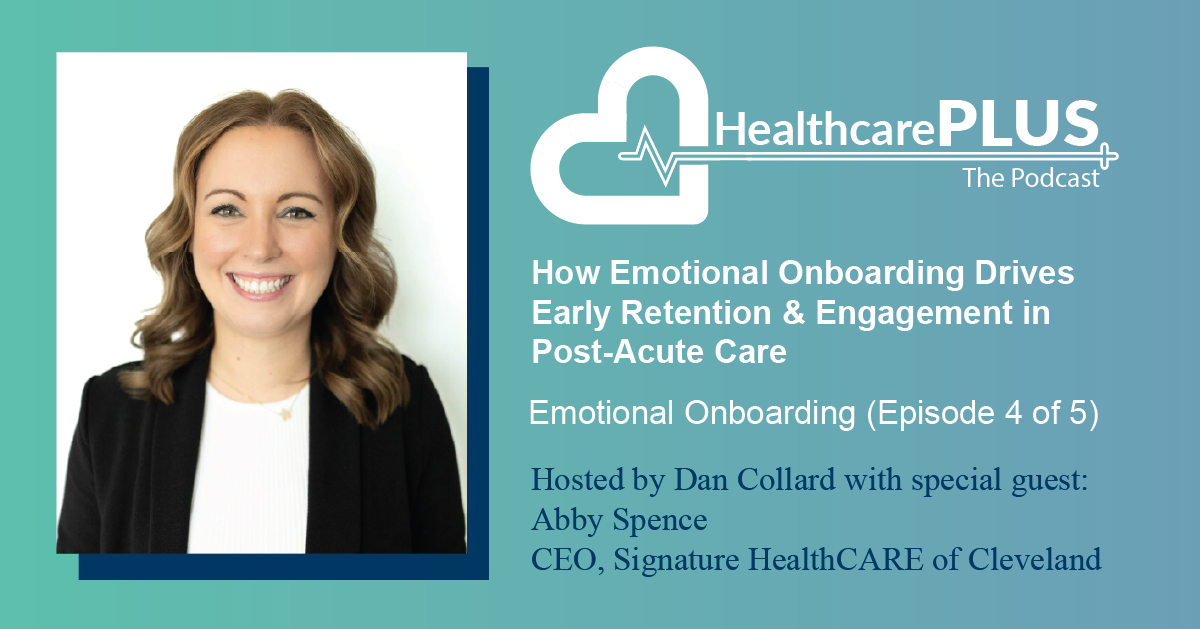Like most other healthcare organizations, post acute staffing shortages have created real challenges.
Abby Spence, who has been a nursing home administrator for the past 11 years and is now the leader of Signature Healthcare of Cleveland, Tennessee, has completely eliminated all of her contract labor.
In a recent podcast with Dan Collard, Abby shared some of her best practices for solving retention problems.
New ways of recruiting: Signature HealthCARE knew they could no longer rely on traditional methods of attracting talent, so they focused on creating a great social media presence. They posted on the awesome things employees were doing in house and how it was a great place to work. This strategy helped attract some younger employees.
Grow your own talent pool: They have an in-house CNA program. This not only grew talent in house, but it also incentivized people to stay with the organization (as they were being invested in).
Start with the why with your leaders: A fully-staffed facility improves consistency and improves Star Ratings, leading to more referrals and a better experience for residents and their families overall. By helping leaders at Signature HealthCARE recognize the value of attracting and retaining full-time staff, they began to take greater ownership in solving the problem.
Keep the folks you have: They focused on providing a warm, welcoming environment to retain current staff. Abby says her team regularly asks staff what they can do better.
Have a robust pre-boarding program: Abby says pre-boarding is all about creating a line of communication and helping the new hire feel like they are part of the team prior to stepping foot in the building on Day One. Pre-boarding also relieves some of the anxiety that a new employee might feel, which improves retention chances.
And a robust onboarding program: A new hire’s first day focuses mainly on helping the employee feel welcome. They tour the facility and become familiar with different areas, and get to know their teammates. (A more “formal” orientation begins on Day 2.) Leaders also send a supportive text message on Day Two or Three. The new employee’s leader reaches out and asks how things are going and lets them know, “We’re so happy you’re here.”
Create a personal retention plan: This is a very intentional new team member conversation between the new hire and the leader that focuses on things that impact turnover. Leaders ask the new employee about their biggest worries or concerns, address any questions they may have, and let new-hires know the door is always open to help solve problems and offer support. Abby shared that so much of what worries people and could eventually create a retention problem can easily be solved at this stage. This conversation focuses on building a relationship and trust with the new hire.
Continue to support them once they’re in the door: Once employees are hired, Signature HealthCARE continues to give them support and good communication. Abby says it’s important for employees to know they are valued.
Act less as a boss and more as a mentor: This may be a younger employee’s first job (or one of their first jobs). Be ready to help them develop, and realize that leading them effectively is all about support and communication.
At Signature HealthCARE, that means:
- Helping employees polish their technical skills and get better at their jobs.
- Figure out what employees are looking for in the workplace. Asking them, “What do you need to succeed here?”
- Finding out what’s driving employees. “What’s your purpose? What motivated you to come work in long-term care? Abby says that if they’re coming to Signature HealthCARE in long-term care and their personal purpose is resident care, that’s a jackpot!
According to Abby, there’s a sense of community in post-acute care because it’s the resident’s community. Employees become part of that community because they work in the residents’ home.
Community creates a sense of belonging, which makes people want to come and make them stay.
This article is based on our special podcast series on Emotional Onboarding. The content above is excerpted from How Emotional Onboarding Drives Early Engagement and Retention in Post-Acute Care with Abby Spence. Click here to listen!
To learn more about Emotional Onboarding, click here.






